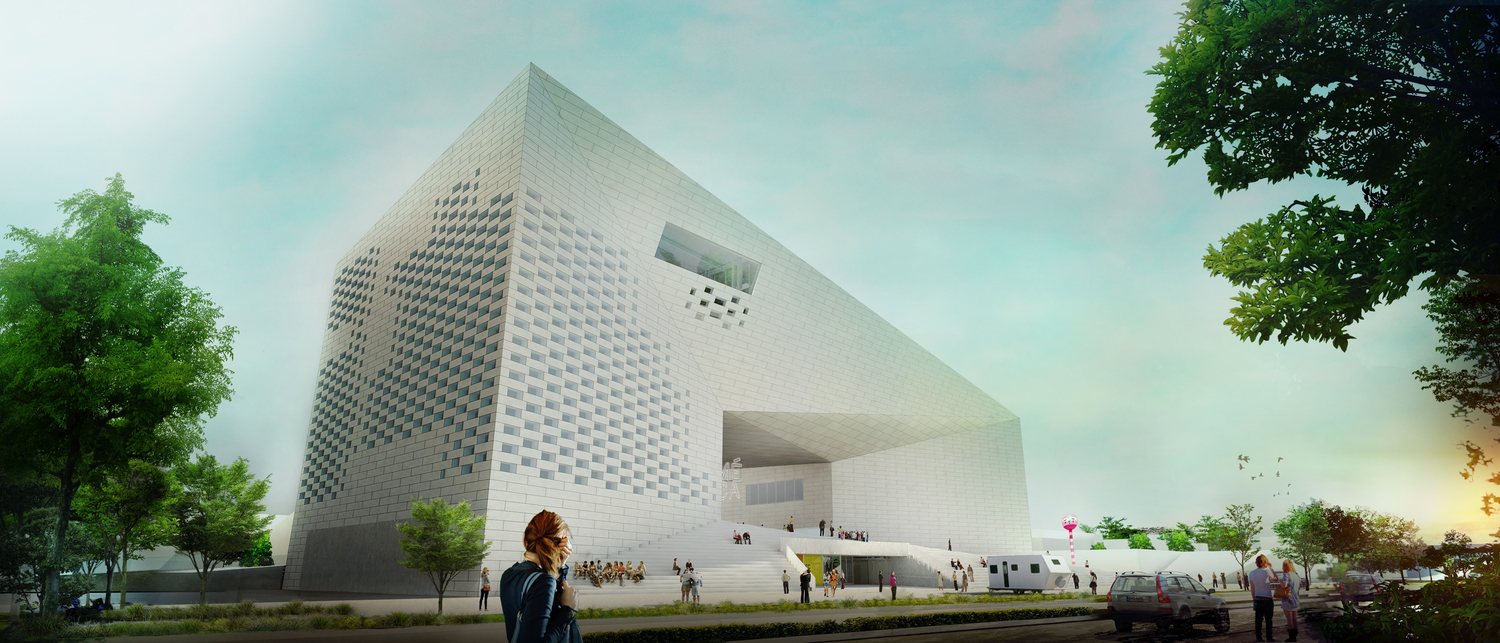Social infrastucture
Notes taken from architect David Zahle's (Bjarke Ingels Group) contribution to Opera Europa's Imagination conference
Architecture is about social infrastructure. It is a dialogue with stakeholders. A building looks the way it does because it performs the way it does.
Social infrastructure involves thinking about people. You build on existing infrastructure to create an urban space filled with graphic art and storytelling.
We are not exclusive taste judges – architecture is the art of inclusion of multiple inputs from all aspects of society. We say yes to the program requirements, to the budget constraints, to the legal limitations and the structural boundaries, the complaints of the neighbours and the concerns for the climate. Essentially by increasing the demand on the performance of the architecture we force our designs into back bending forms that twist and turn to keep everybody happy and avoid stepping on anybody’s toes.
New infrastructure asks the question: how do you experience the landscape? In a cultural institution, flow is everything. You create a landscape of nature, buildings, sculptures.
VIA West 57th Street is an example of combining the density of a tower with a courtyard community. We call it a ‘courtscraper’! The building looks different because it performs differently!
By proactively cross-breeding the public infrastructure with social programs we can inject new urban life forms in to the heart of our cities.
MECA in Bordeaux brings together three cultural institutions into one building - a building integrated with the waterfront promenade of Bordeaux to allow public life to flow through the MÉCA.

The three institutions and their shared facilities are gathered around a public space framing a fifth program – and outdoor urban room that will frame the everyday life of Bordeaux flowing through the expansive space along the promenade or to and from the river. On special occasions, it will turn in to an urban stage, or an outdoor gallery to extend the art into the city, as well as the city into the architecture. The urban room is at once a frame for the artwork, a stage for the performances, a screening room for the media collections and perhaps most importantly an open room for the urban life of Bordeaux to flow through and engage with the arts.
Social infrastucture
Notes taken from architect David Zahle's (Bjarke Ingels Group) contribution to Opera Europa's Imagination conference
Architecture is about social infrastructure. It is a dialogue with stakeholders. A building looks the way it does because it performs the way it does.
Social infrastructure involves thinking about people. You build on existing infrastructure to create an urban space filled with graphic art and storytelling.
We are not exclusive taste judges – architecture is the art of inclusion of multiple inputs from all aspects of society. We say yes to the program requirements, to the budget constraints, to the legal limitations and the structural boundaries, the complaints of the neighbours and the concerns for the climate. Essentially by increasing the demand on the performance of the architecture we force our designs into back bending forms that twist and turn to keep everybody happy and avoid stepping on anybody’s toes.
New infrastructure asks the question: how do you experience the landscape? In a cultural institution, flow is everything. You create a landscape of nature, buildings, sculptures.
VIA West 57th Street is an example of combining the density of a tower with a courtyard community. We call it a ‘courtscraper’! The building looks different because it performs differently!
By proactively cross-breeding the public infrastructure with social programs we can inject new urban life forms in to the heart of our cities.
MECA in Bordeaux brings together three cultural institutions into one building - a building integrated with the waterfront promenade of Bordeaux to allow public life to flow through the MÉCA.

The three institutions and their shared facilities are gathered around a public space framing a fifth program – and outdoor urban room that will frame the everyday life of Bordeaux flowing through the expansive space along the promenade or to and from the river. On special occasions, it will turn in to an urban stage, or an outdoor gallery to extend the art into the city, as well as the city into the architecture. The urban room is at once a frame for the artwork, a stage for the performances, a screening room for the media collections and perhaps most importantly an open room for the urban life of Bordeaux to flow through and engage with the arts.






